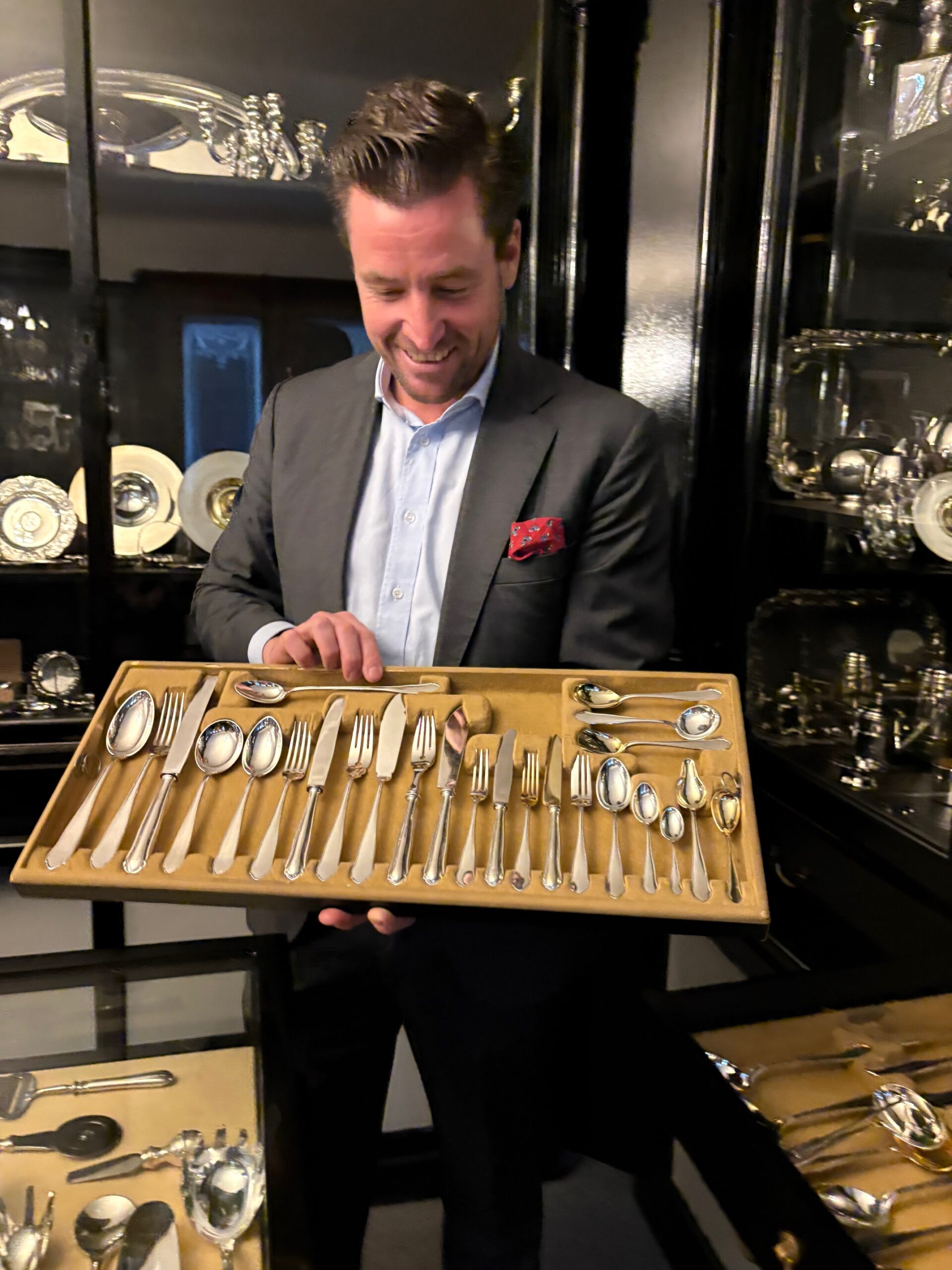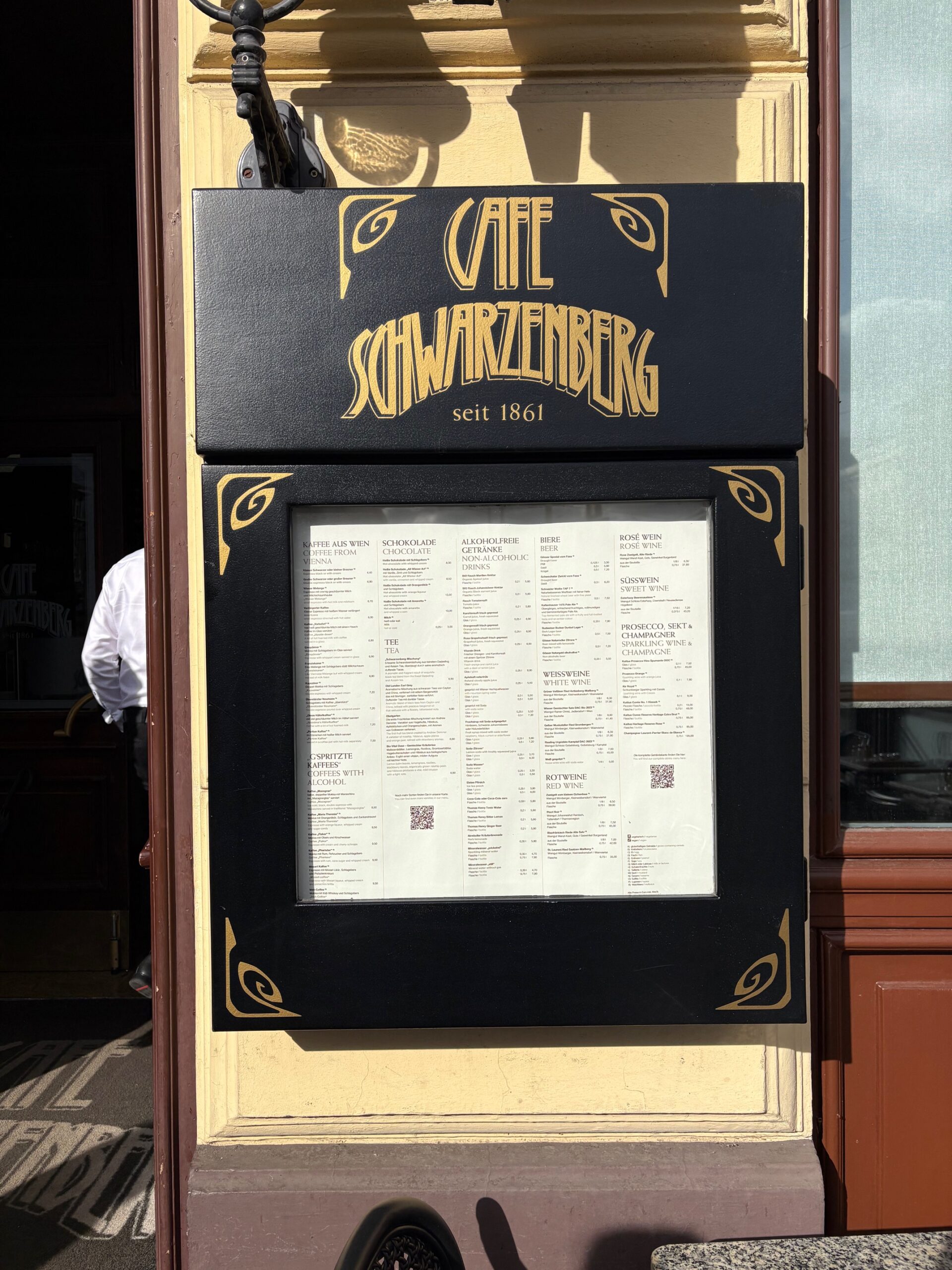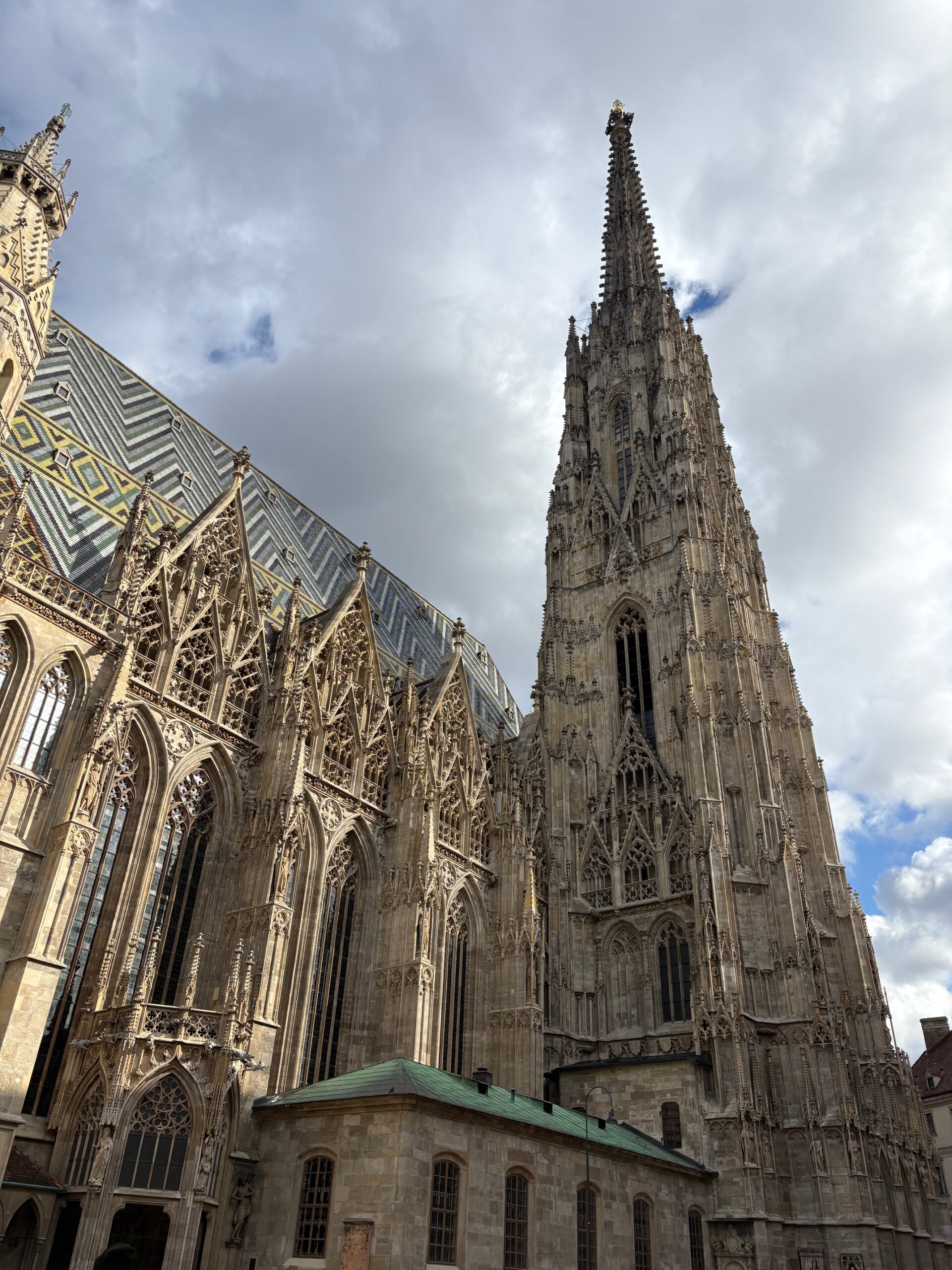VIENNA — Vienna, the stunningly scenic capital of Austria, is a city of culture, cafés – and cuisine. It has been a seat of European power and home to maestros and musicians, but I’m here to eat.
The only culinary tradition in the world thatʻs named after a city, Viennese cuisine goes beyond Wiener schnitzel and sausage (although don’t say no to these classics).
Chefs mix traditional recipes with international influences, and have been since the city became a hub of international trade and royal position.
It’s said that the croissant – yes, the croissant – was invented here, an offshoot of a crescent-shaped pastry made with butter and sometimes garnished with sugar and almonds.
It came to France via Marie Antoinette. And, with all the pastries that Marie Antoinette introduced to the French court, she certainly did let them eat cake.
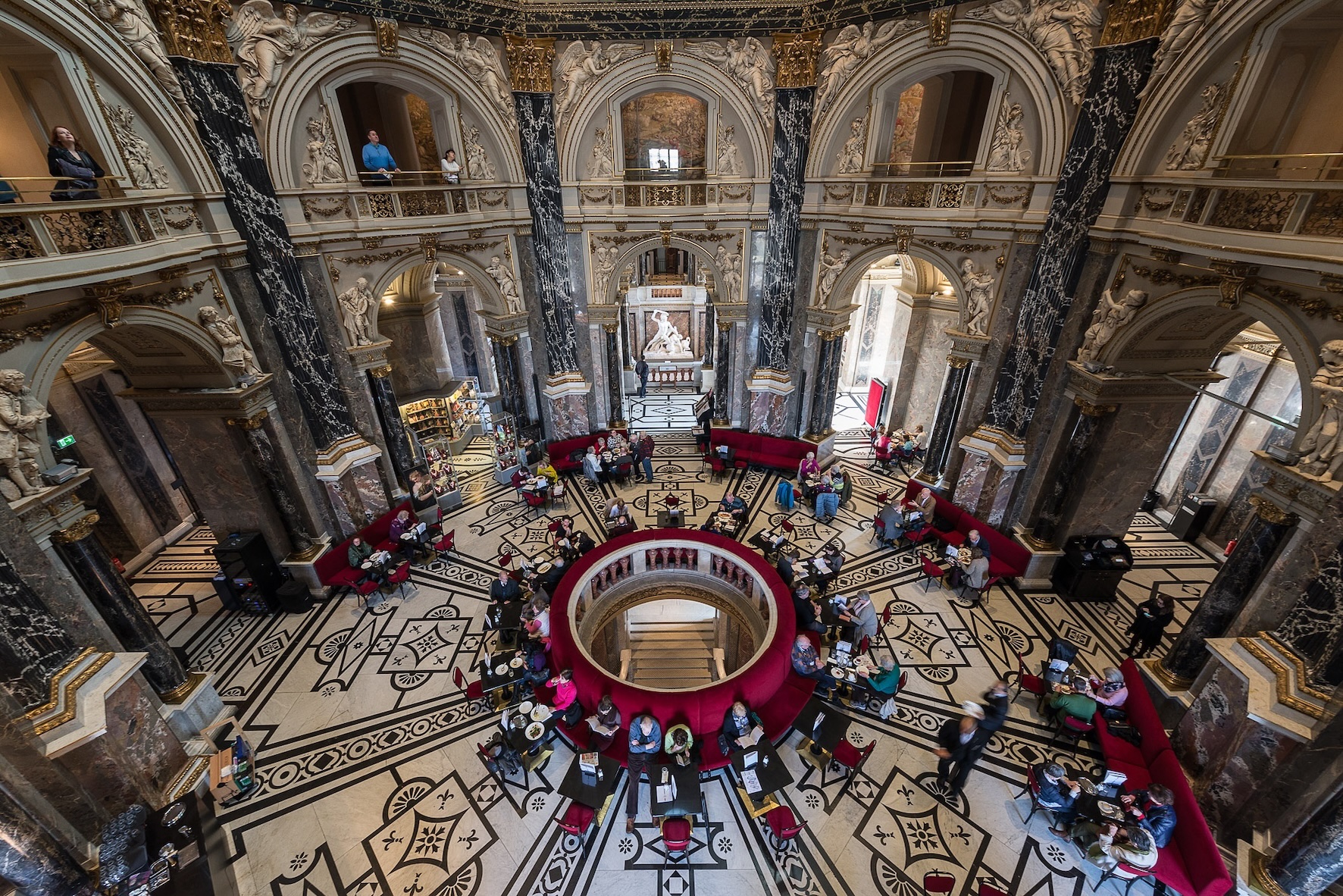
Dining at the Café-Restaurant at the Kunsthistorisches Museum Vienna is an unforgettable culinary experience (photo courtesy Vienna Tourist Board)
TAKING A BITE OUT OF VIENNA
Jump start your day with a guided ʻJourney Through Vienna’s Coffeehouse Cultureʻ tour led by Artemezzo’s Martha Tretter.
We began with a visit to Kafeefabrik, a modern, minimalist cafe that espresso roasts inhouse, experimenting with coffee beans from Guatemala, Colombia, Brazil and more, and insisting on fair trade and organic blends. Every bean is ground to the way you want your coffee: espresso, drip, French press, melange, you name it.
But the grand Café Schwarzenberg, opened in 1861, still impresses. One of the oldest cafes in Vienna, it’s always busy practicing the art of the coffeehouse, with its formally dressed waiters and strudel in the glass case upfront, piled high with apples, cream cheese or apricots, while locals talk politics, events and art.
To get an idea of what traditional Viennese cuisine is all about, we’ve booked a table at Gastwirtschaft Sterman. It’s a no-fuss inn packed with locals, with waiters spinning around the noisy tables proffering trays piled with plates of schnitzel, dumpling soup, onion roast beef and Tafelspitz (a mix of boiled beef with minced apples and horseradish) and a Viennese favourite soft drink, lemon juice and soda water.
Earlier this year, Vienna Tourist Board CEO Norbert Kettner told Travelweek that tourism to the city was up almost 10%, and travel from Canada was up almost 28%.
Although the numbers aren’t in yet for this year, it stands to continue being a popular destination. “The Vienna Tourist Board participates at various trade shows focused on the luxury market, such as Virtuoso Forums and ILTM (International Luxury Travel Market), and yearly trade events in Toronto and Montreal for advisors and the travel industry,” says Armando Mendonça, President of AMpm Canada, the PR agency representing Vienna to trade.
“It’s also important to note that the Vienna Tourist Board is the only mainland European city that markets in Canada on a yearly basis, demonstrating their commitment to the Canadian market and agency community,” he adds.
At Jarosinski & Vaugoin Silversmith, we take a break from coffee and eating – but not the subject of table culture. Still family-owned, the shop is filled to the brim with silver cutlery and serving pieces to set the table.
It’s a fascinating place, with all manner of forks and spoons and teapots and baby rattles and fanciful animals residing in dozens of secret drawers, some with patterns that were created almost 200 years ago and still coveted today. It’s where Prince William and Princess Kate had dessert spoons forged for a state dinner.
- Jarosinski & Vaugoin Silversmith, where Prince William and Princess Kate had dessert spoons forged for a state dinner (photo courtesy Vivian Vassos)
- The grand Café Schwarzenberg, opened in 1861, is one the oldest cafes in Vienna (photo courtesy Vivian Vassos)
On the rooftop of the Hotel Motto, dinner at Chez Bernard is as elevated as the place. It sits in the heritage building’s glass-domed top floor – at night, the city’s twinkling lights are the backdrop – and the restaurant has a Bib Gourmand Michelin designation.
Fresh oysters, escargot in a garlicky pesto sauce and a radicchio salad with toasted walnuts and blue cheese are standouts, accompanied by Austrian wines to keep it local.
Speaking of local, a city with its own culinary destination deserves a day out on a guided food tour. Basti is half of a brother and sister duo that own Rebel Tours, and today he’s taking us through Vienna’s 7th district, Neubau, which he says is the coolest.
It’s vibrant and alive, and also where we’re staying at Hotel Motto, so we get the groove.
Basti speaks perfect English, and his enthusiasm for his city is infectious. He gives us a taste of another unique feature of Vienna: the Heuriger, which is a winery in the city. Vienna has more than 100 Heurigen, traditional wine taverns that are easily within reach for those that want to have a wine tour without leaving the city.
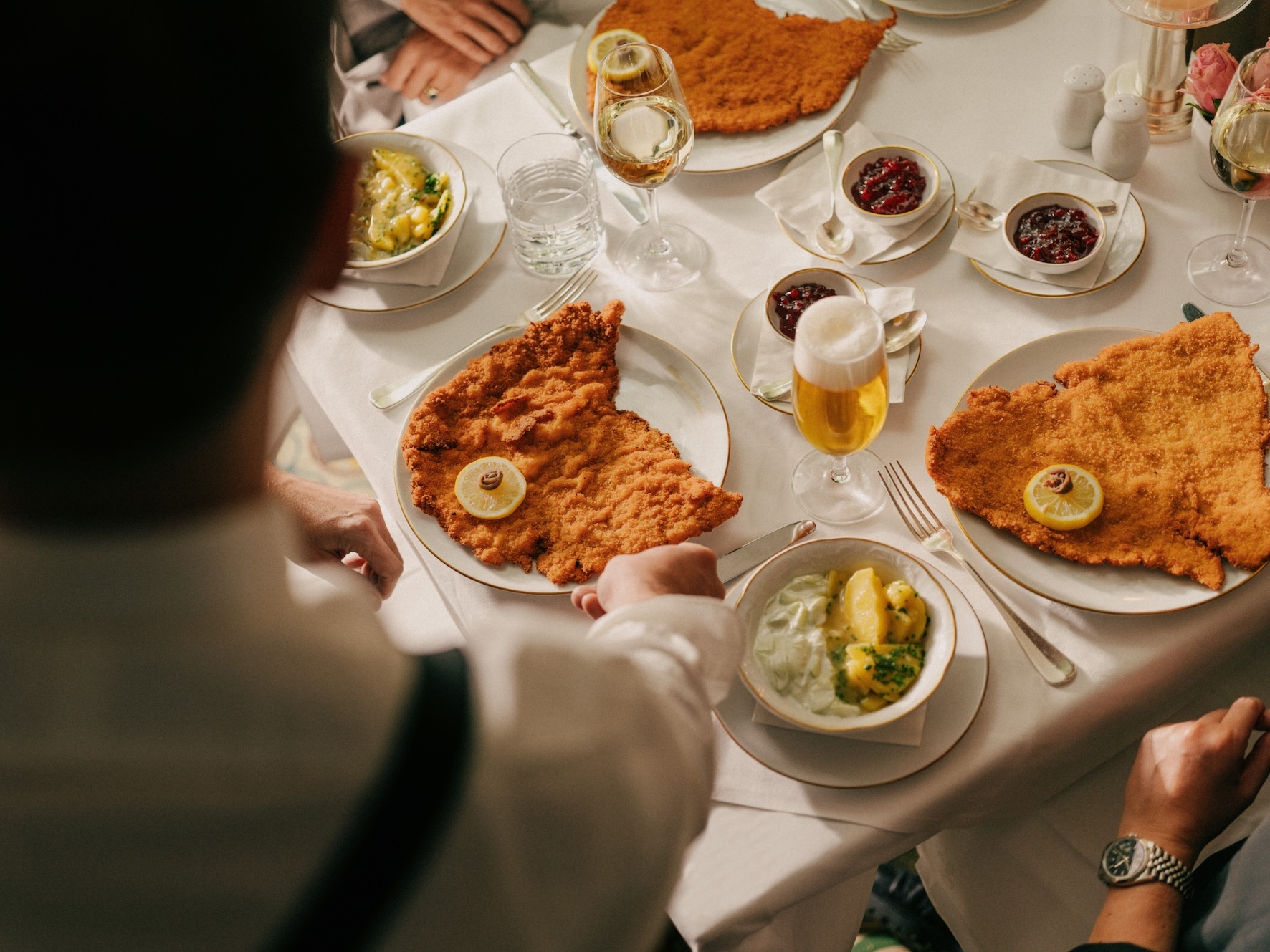
Wiener schnitzel, a classic of Viennese cuisine (photo courtesy Vienna Tourist Board)
Our sugar fix is filled at Ahrnst, a one-man artisanal bakery tucked away in a larger shop called Espresso Buffet, with the word Sauerkraut scrawled above the window, a bit of kitsch that is everywhere in Vienna, proving that this seriously efficient, clean and safe city can also have a little fun. The croissants stuffed with egg salad are savoury and buttery; the panettone is made with a sourdough starter, giving it a less-sweet appeal.
We finish with, what else, a sausage and Austrian wine tasting at Leitenbauer Delikatessen, where a button on the wall beckons: ‘Ring for Champagne.’ Yes, please. But I’ll happily take a local Viennese sparkling.
ʻVIENNA BITES: CUISINE, CULTURE, CHARACTERʻ
Mendonça, who has supported the VTB for 11 years in Canada and works to provide agents and the travel community with the tools they need to sell Vienna, revealed that the Vienna Tourist Boardʻs theme for 2026 is ʻVienna Bites: Cuisine, Culture, Character.ʻ
Vienna has already kicked off its culinary year with Wine Autumn, with white wine as the star of the show. With more than 600 hectares of wine growing within the city limits, it’s no wonder, and many also have hiking trails.
According to the VTB, 85% of the vineyards are planted with white wine varieties – especially Grüner Veltliner, Riesling, Pinot Blanc, Chardonnay and above all, the Wiener Gemischter Satz, a local specialty with a long tradition.
- Vienna is a city of culture, cafés and cuisine (photo courtesy Vivian Vassos)
- The iconic St. Stephen’s Cathedral (photo courtesy Vivian Vassos)
HIGHLY RECOMMENDED: 4 TIPS
Got Vienna clients? Here are some sales tips …
- Book small groups who want to learn the secrets of Viennese strudel an Apfelstrudel (apple strudel) making class at Kruste & Krume. You get to take your strudel away with you for a yummy snack later, too.
- Encourage a stop at Bitzinger, one of the most famous sausage stands in Vienna. Expect a lineup, order a Käsekrainer (pork sausage stuffed with Emmental cheese) and eat it on the street, sliced and dipped in mustard, with a side of rye bread.
- Suggest your guests stop in at J & L Lobmeyr, a crystal and glassware shop that’s two floors of light-catching brilliance. Founded in 1823, it’s as much a keeper of the history of this craft as it is a place to purchase delicately designed drinkware that’s graced the tables of Austrian royalty for more than a century.
- Luxury guests will appreciate being among the first guests at The Mandarin Oriental, opened in November 2025.
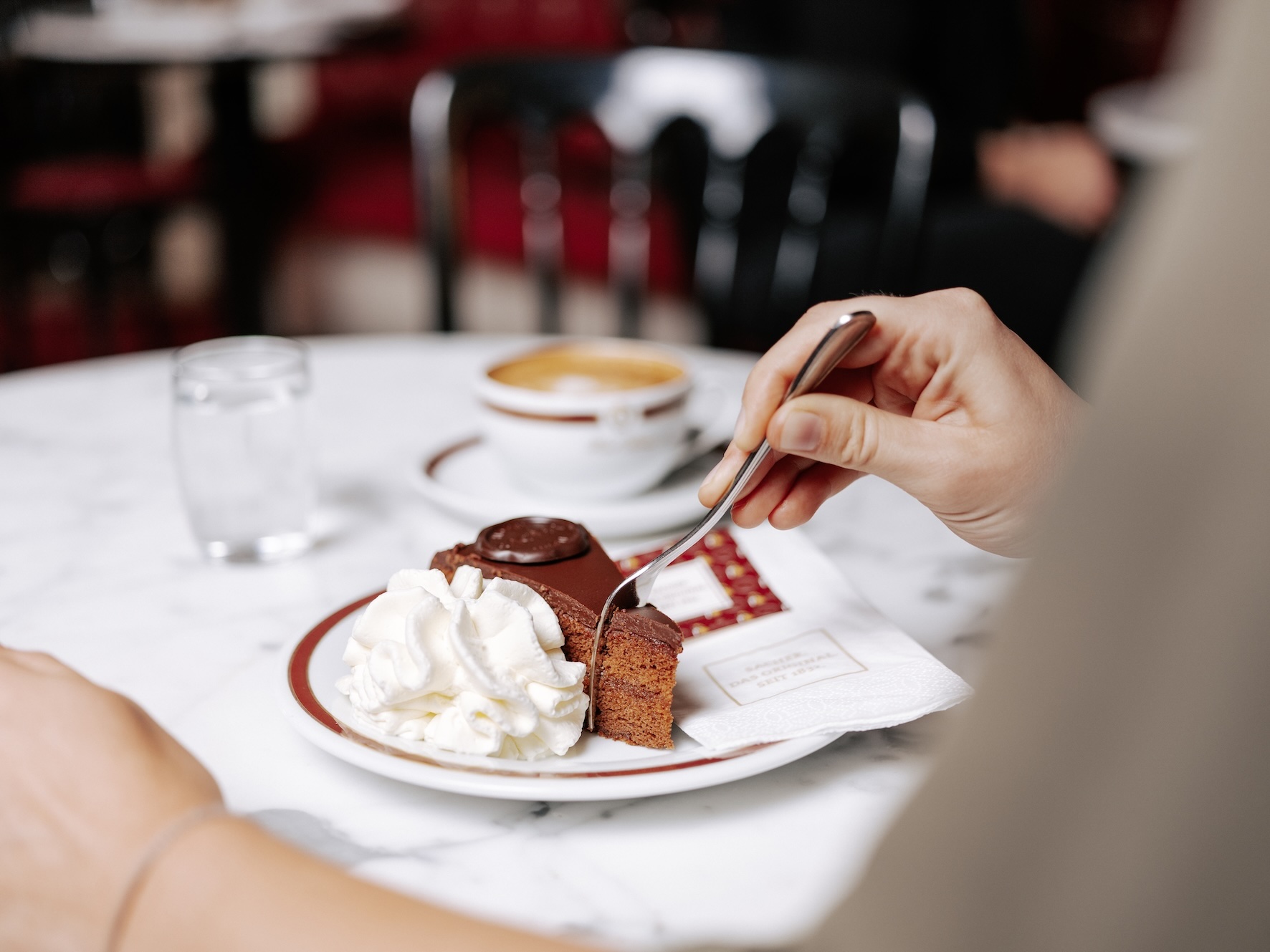
The decadent Sachertorte is one of Austria’s most famous desserts (photo courtesy Vienna Tourist Board)
WORKING WITH VIENNA: AGENT RESOURCES
The Vienna Tourist Board offers many tools to support the travel agent community, from the Vienna Experts Club, to the tourist boardʻs image library and collateral.
The tourist board also offers many itinerary suggestions that agents can book direct with the recommended inbound tour operators.
Travel advisors are invited to visit the B2B site at b2b.vienna.info.
Lead image caption: Austria is justly proud of its world famous Apfelstrudel (photo courtesy Vienna Tourist Board)

